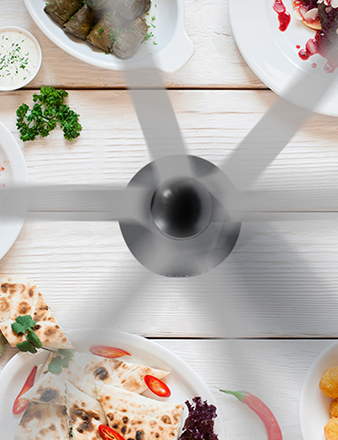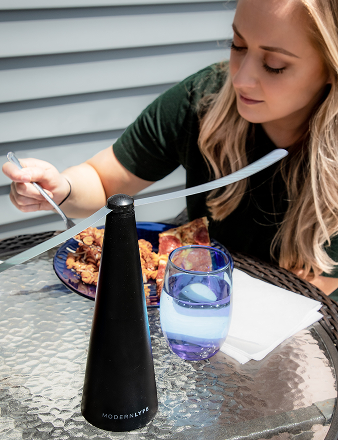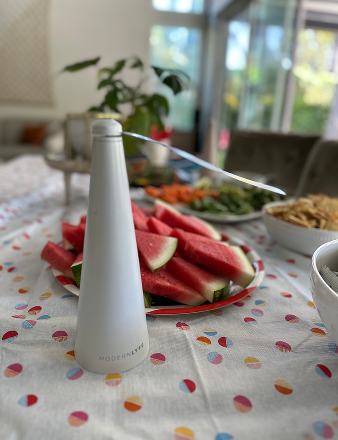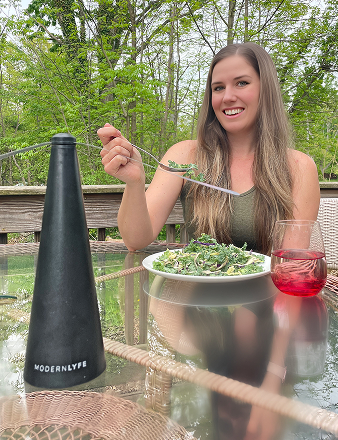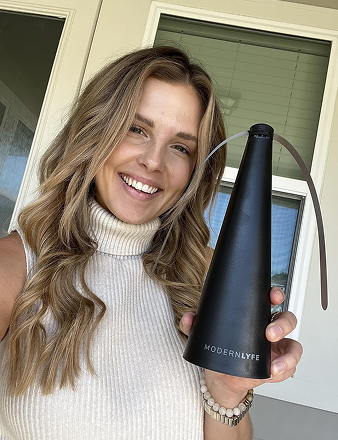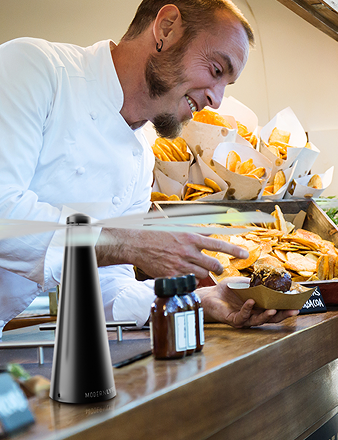Nothing kills a perfect patio vibe faster than a swarm of flies. One minute you're relaxing, the next you're swatting at uninvited guests, turning your peaceful retreat into a battle zone. It's a universal summer frustration, but the solution isn't chasing them one by one.
The secret is to make your patio completely unappealing to them. It's about figuring out what they're looking for and taking it away.
This guide gives you a practical plan to do just that. We'll show you how to stop reacting to the problem and start preventing it. Think of this as your roadmap to not only get rid of the flies you have now but to ensure they skip your patio in the future.
The Ground Rules for a Fly-Free Patio
Creating a fly-free oasis comes down to a few core principles. Focus on these key areas, and you'll break the cycle that keeps them coming back.
- Cut Off Their Food Supply: Flies are constantly hunting for a meal. A sticky soda spill, crumbs from a barbecue, or an unattended pet food bowl are all open invitations.
- Eliminate Breeding Grounds: Flies need stagnant water to lay eggs—and they don't need much. A small puddle in a plant saucer or a clogged gutter can quickly become a nursery for hundreds of new flies.
- Create Physical Barriers: Sometimes, the best defense is simply making it impossible for them to land where they want to. Simple, clever environmental changes can be surprisingly effective.
The goal is to send a clear message: "This patio is closed for business." When you remove their sources of food, water, and shelter, you're not just fighting them—you're changing the environment from a fly paradise into a place they'll gladly avoid.
Understanding What Attracts Flies to Your Patio
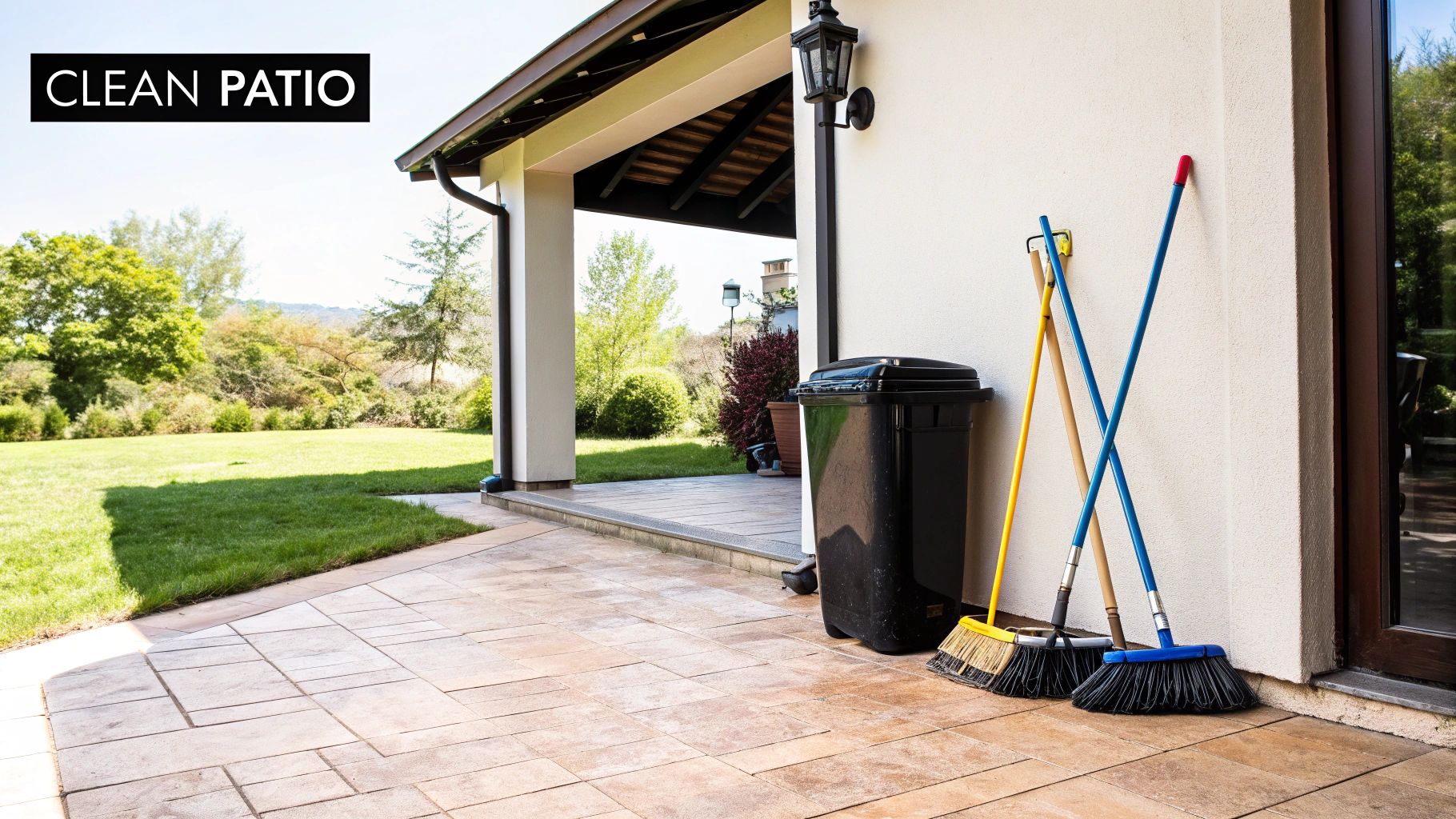
To win the war against patio flies, you have to think like one. What makes your outdoor space a five-star resort for these pests? It's simpler than you might think. Flies are driven by basic survival instincts: finding food, water, and a place to lay eggs.
Your patio, unfortunately, can tick all those boxes without you even realizing it.
The most powerful magnet is food. A stray crumb, a sticky spill, or the greasy film on your grill grate might as well be a flashing neon sign. Flies have an incredible sense of smell and can lock onto these scents from far away.
But it's not just about leftovers. Flies are drawn to all sorts of organic material, which is where many people miss the real source of the problem.
Less Obvious Fly Magnets
To truly get rid of flies on your patio for good, you need to look beyond the dinner table. Let's dig into the less obvious things that could be turning your outdoor space into a fly paradise.
- Pet Waste: It's unpleasant but true. A single pile of dog waste can become a breeding ground for thousands of flies in just a few days.
- Overflowing Trash Bins: A garbage can that isn't sealed tight is an open buffet. The smell of decomposing food is an irresistible invitation for flies to feast and lay eggs.
- Stagnant Water: Flies need moisture for their eggs to hatch. That little bit of standing water in a plant saucer, a clogged gutter, or an old tire can become a bustling fly nursery.
Sobering fact: A single female housefly can lay up to 500 eggs in her short life. An oversight like a forgotten trash bag can lead to a full-blown fly explosion in under a week.
The Bigger Picture of Fly Infestations
Sometimes, the problem isn't just in your backyard. A persistent fly issue can occasionally be traced back to larger environmental factors. For example, studies on the impact of farming on fly populations show how large-scale agricultural operations can create massive breeding grounds, with flies then migrating to surrounding residential areas.
Knowing what draws them in is the first critical step. When you start eliminating their food, water, and breeding spots, your patio becomes a much less appealing hangout. For tips on keeping them off your plate while you eat, check out our guide on how to keep flies away from outdoor food.
Setting the Stage for a Fly-Free Patio
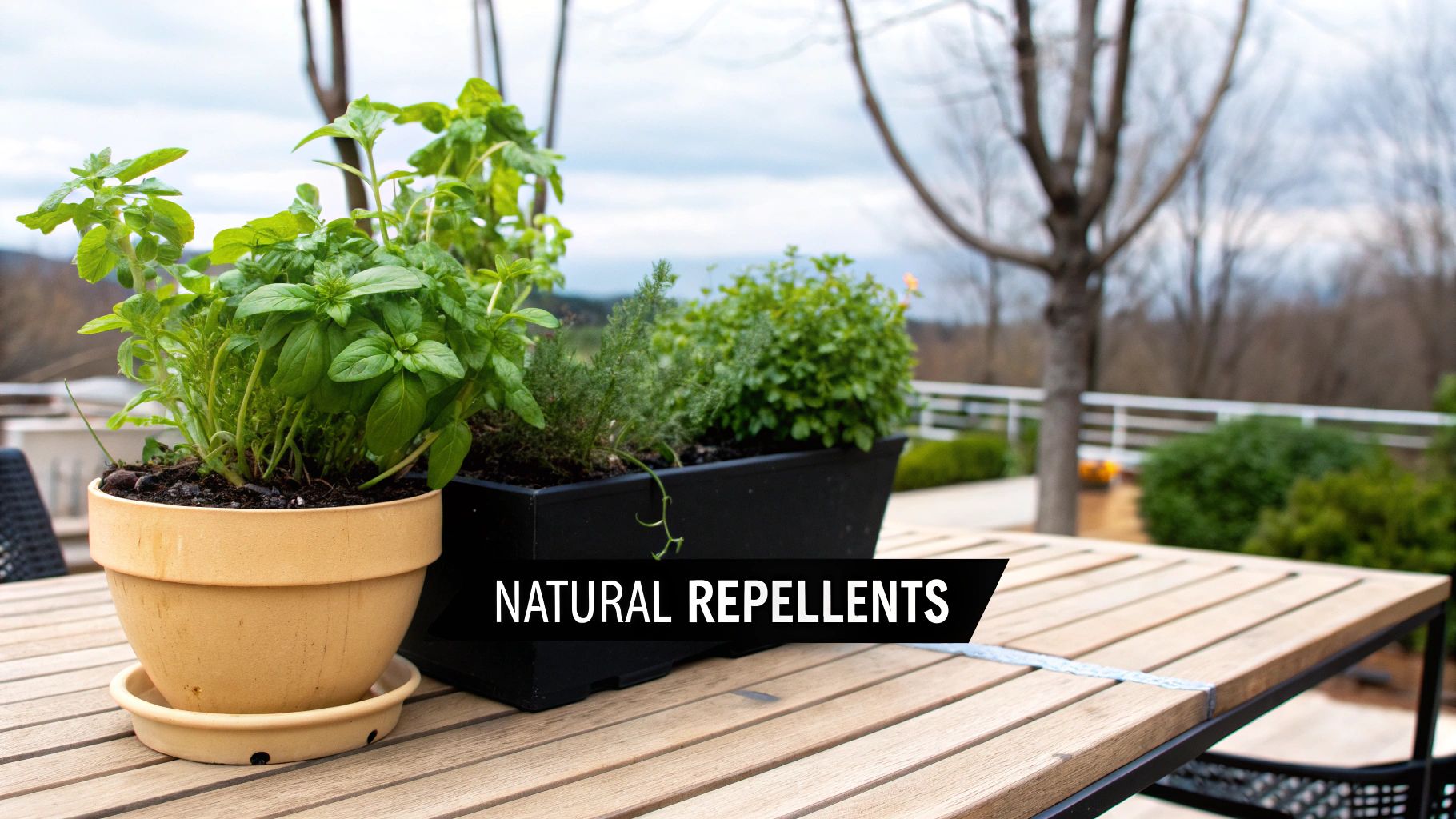
The best way to get rid of flies is to make them feel unwelcome from the start. Think of it as proactive defense—turning your outdoor space from a fly hotspot into a no-fly zone. This goes way beyond a quick sweep of the deck.
It boils down to denying them what they need to survive: food and a place to breed. Flies are masters at sniffing out the tiniest crumbs and hidden puddles. If you consistently take those away, you build a powerful, low-maintenance barrier that does most of the work for you.
Nail Your Cleanup Game
A truly clean patio offers a fly absolutely nothing to eat. Picture the aftermath of a barbecue—a little grease spatter, a few dropped crumbs, a sticky drink spill. To you, it's a small mess. To a fly, it's a buffet. A sharp cleanup routine isn't just nice; it's essential.
- Grill and Cooking Surfaces: After cooking, give your grill grates a good scrape and wipe down any nearby surfaces. A greasy grill is a scented invitation flies can't resist.
- Smart Trash Strategy: Your trash can is public enemy number one. Make sure it has a lid that seals tightly. If possible, move it further from where you eat and relax. A quick rinse now and then to remove gunk also goes a long way.
- The Pet Zone: We love our pets, but their mess is a huge draw for flies. Clean up pet waste immediately and wash their food and water bowls daily. You don't want their corner of the patio becoming a fly nursery.
Hunt Down Hidden Water
Flies need standing water to lay their eggs, and they aren't picky. It takes surprisingly little—a bottle cap full of rainwater is more than enough for them to start a new generation. Make it a habit to take a quick walk around your patio looking for these hidden water sources.
The secret is consistency. A five-minute scan for standing water after it rains or a thorough wipe-down after dinner makes a huge difference. You're interrupting their entire life cycle before it starts.
This preventative mindset is the bedrock of keeping your patio enjoyable. For more strategies, see our complete guide on how to keep flies away outside. By making your patio a place flies want to avoid, you’ll find you barely need to think about traps and zappers.
Choosing the Right Fly Control Methods
So, you've done the preventative work, but a few stubborn flies are still crashing your party. It happens. Now it's time to shift from passive prevention to active control. The key isn't a single magic bullet, but layering smart solutions that fit your lifestyle.
Let's be honest: old-school methods have drawbacks. Bug zappers kill indiscriminately, taking out beneficial insects along with pests. And while sticky traps catch flies, they're an eyesore and a mess to deal with.
Thinking Beyond Traps and Zappers
A smarter, chemical-free approach uses a fly’s own biology against it. This is where devices like the Modern Lyfe fly fan come in. They’re simple but incredibly effective.
The soft fan blades have reflective holographic patterns that scramble a fly’s compound eyes. That visual confusion, plus the gentle breeze, creates a no-fly zone that flies instinctively avoid.
The best part? A fly fan protects the most important area—your outdoor dining table—without noise, chemicals, or dead bugs. You just set it down, turn it on, and enjoy your meal without constant swatting.
Beyond tech, nature offers its own potent fly deterrents. You can create a natural, fragrant barrier by planting specific herbs and flowers around your patio.
- Basil and Mint: These are easy to grow in pots, and their strong, fresh scent is something flies can't stand.
- Lavender and Rosemary: They smell fantastic and look beautiful, but they're excellent at keeping flying pests away.
- DIY Essential Oil Sprays: For a quick fix, mix water with a few drops of peppermint or lemongrass oil in a spray bottle. A spritz around your seating area creates a temporary shield.
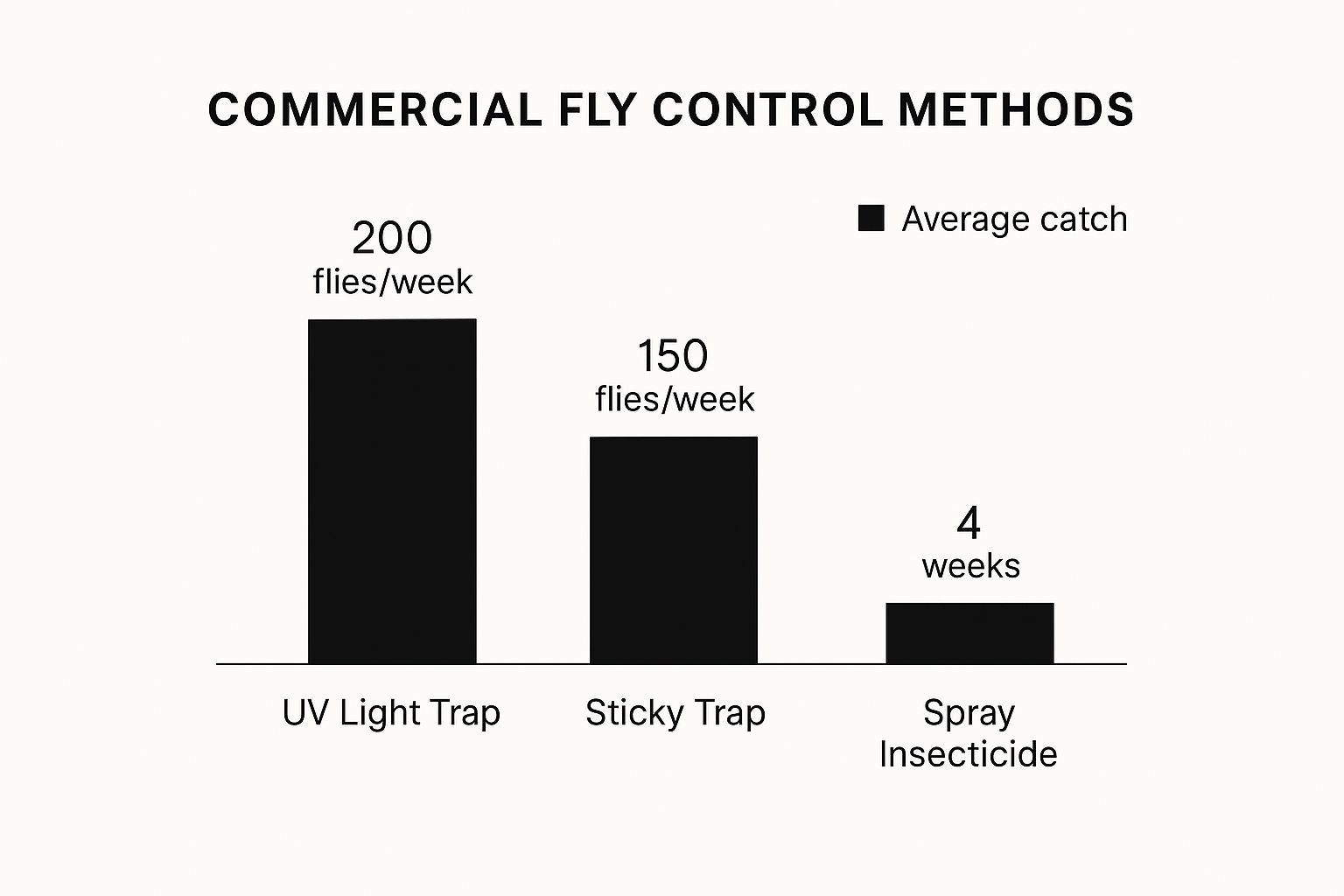
Comparing Patio Fly Control Solutions
With so many options, deciding what’s right for your patio can be tough. This table breaks down common methods, comparing effectiveness, safety, and effort.
| Method | Effectiveness | Safety (Kids/Pets) | Maintenance Level |
|---|---|---|---|
| Fly Fans | High in targeted zones | Excellent (soft blades) | Low (battery change) |
| Bug Zappers | Moderate | Poor (burn risk) | Medium (cleaning) |
| Sticky Traps | Moderate | Poor (messy, gets stuck) | Medium (regular replacement) |
| Repellent Plants | Low to Moderate | Good (check for toxicity) | Medium (gardening care) |
| Essential Oils | Low (short-term) | Good (when diluted) | High (frequent reapplication) |
Ultimately, the most effective strategy is a combined one. Layering different methods—like a modern fly fan protecting your table and fragrant plants along the perimeter—builds a multi-faceted defense. This approach makes your patio a much less inviting place for flies.
To dive deeper into repellents, check out our guide on the best outdoor fly repeller options.
Long-Term Strategies for a Fly-Free Patio
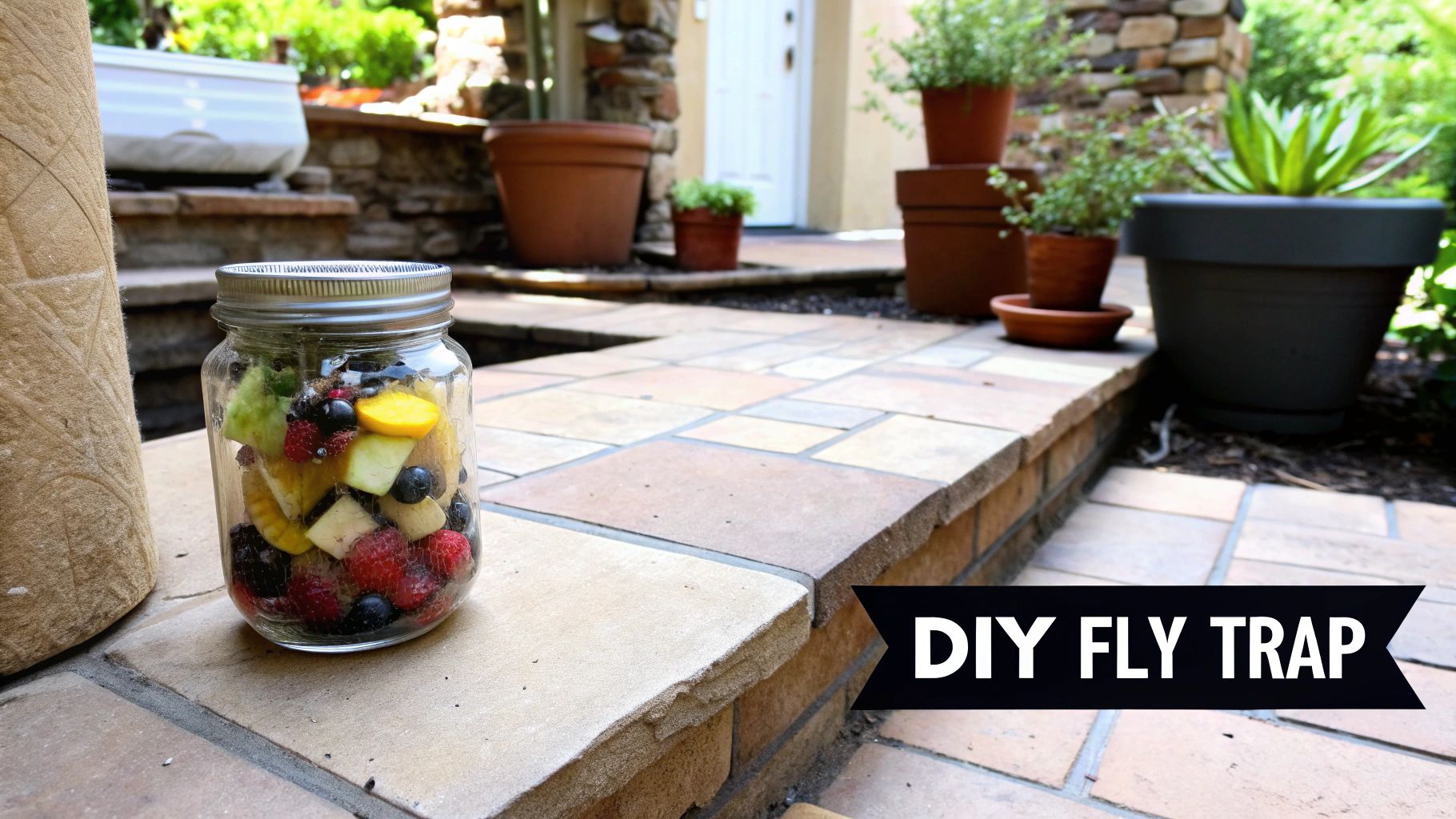
Winning the immediate battle against flies is one thing; keeping them away all season is the real goal. The trick is to shift from reacting to a fly problem to proactively preventing one. Lasting fly control comes down to building a few simple habits into your regular outdoor routine.
It’s all about making your patio an unattractive place for flies. Think of it as a quick weekly patrol—a few minutes to walk the area and remove anything that might invite them over.
Your Weekly Fly Prevention Checklist
A simple, consistent routine is far more effective than an occasional deep clean. Here’s a quick checklist to run through weekly to keep your patio a no-fly zone.
- Scout for standing water. Empty plant saucers, forgotten buckets, and kids' toys that have collected rainwater.
- Wipe down surfaces. Give your patio table and outdoor countertops a quick wipe-down to remove sticky spills or crumbs.
- Check trash and compost. Ensure bin lids are sealed tight. An overflowing or smelly bin is a massive welcome sign for flies.
- Police pet areas. Scan the yard and scoop any pet waste. This is a major fly attractant.
The key is to stay one step ahead. Catching the early signs of a fly problem lets you nip it in the bud before their population explodes—which can happen fast.
So, when does a stray fly become a real problem? In pest control, there are actual thresholds. For example, some professional fly monitoring techniques suggest that catching more than 25 houseflies on a sticky trap within 48 hours indicates a significant issue that needs immediate attention.
Common Questions About Patio Fly Control
https://www.youtube.com/embed/fxgd07wtPWs
Even with the best plan, it's natural to have questions. Let's tackle some of the most common ones about reclaiming your patio from flies.
Do Fly Fans Actually Work on a Patio?
Yes, they work remarkably well. Fly fans use a two-pronged attack. First, the constant breeze makes it difficult for flies to land near your food and drinks.
Second, the reflective patterns on the blades create a visual disturbance that scrambles a fly's compound vision. They perceive this shimmering, moving light as danger and instinctively avoid the area. It’s a silent, chemical-free way to protect your table.
What Scents Naturally Keep Flies Away?
Flies have a sensitive sense of smell, which you can use to your advantage. Many scents we find pleasant are repellent to them.
- Plant Repellent Herbs: Place pots of basil, mint, lavender, or rosemary around your seating areas. They look great and act as natural repellents.
- Use Essential Oils: A diffuser with peppermint, lemongrass, or citronella oil works well. You can also mix them with water in a spray bottle for a quick spritz before guests arrive.
- Try a Classic Trick: Slice a few lemons in half, stick whole cloves into the flesh, and place them on a plate. The combined scent is a powerful, natural deterrent.
A sudden surge in flies almost always points to a new food source or breeding ground. The most common culprits are leftovers from a cookout, an uncleaned pet food bowl, an overflowing trash can, or a small puddle of stagnant water.
A quick walk-through of your patio and yard will almost always reveal the source.
For a simple yet powerful solution that keeps your food and guests protected without chemicals or odors, trust MODERN LYFE. Our fly fans create an elegant, pest-free zone so you can enjoy every moment outdoors. Explore our collection at https://modernlyfe.com.

